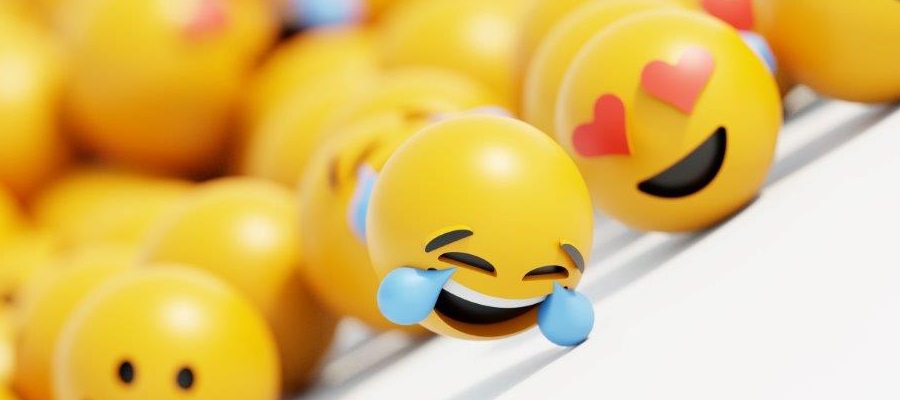Pre-reading: Do you use emojis in your communication with friends? How many emojis are you familiar with? Sketch some of them, pass it to your neighbour and he will describe their meanings in words. You will do the same with his drawings. Have fun.
Did you know that EMOJI is the fastest growing language on our planet? It is intuitive, fun, and adds meaning to social media messages. Emojis have even entered the Oxford Dictionary of English.
The word emoji comes from Japanese words “e” meaning picture and “moji” which means character1. Until recently, emoji were called emoticons, from the English emotion + icon. When we use these symbols, we have to thank a Japanese man called Shigetaka Kurita. When he was working on an early mobile internet platform, he saw an opportunity to use pictograms to speed communication up. The big mobile phone companies were not thrilled with his idea of simplifying digital communication among people, so he himself drew the first 170 pictures. Then the companies understood what he had been trying to do. Today, the emoji vocabulary has over 1800 symbols.
RAPID EXPANSION
Things have developed very fast since the first emoji was created in 1999. In 2016, fans set up the first global conference on emoji. Even more interesting is that Scottish tennis star, Andy Murray, tweeted the story of his wedding day only using emojis! Of course, as with anything new, a lot of people could not see emoji potential. They would say that emoji was the end of civilization and it would dumb down2 communication among people. Recently emoji has many supporters and they do not agree. It is impossible or at least difficult to transmit your emotion or tone in a short message, however, emoji is able to express it. A happy face tells all you need to convey3. For emoji supporters, these symbols speak at a deeper, emotional level. They are small, but an emoji speaks a thousand words.
EMOJI = INTERNATIONAL LANGUAGE
Emojis transcend4 language barriers but there are differences. At the same time, these differences provide a fascinated insight into various cultures. In some South American countries, for example, the most frequently tweeted emoji is the symbol for music. Hearts are favourite for Japan, South Korea, France, and Italy. Some nations, when they want to show how grateful they are, they use the prayer-hand symbol5. In our countries, the most popular symbol is the laugh-cry face, a smiley face that is laughing so much that it is crying.
QUESTIONS:
Do you use emojis to communicate with your friends? Which is your favourite emoji that you use most often? Do you know lots of emoji or only a few? Would you be able to write a sentence only using emoji?
INTERESTING FACTS
Around 70 new emojis are added every year. People from around the world send in their ideas and a group of people known as the Unicode Consortium choose which ones are good enough to be added to their growing list. If you are obsessed with emojis, you can see a short film about them at http:dissolve.com/showreels/emoji
Janka Něničková
VOCABULARY: 1 znak; 2 znížiť – snížit; 3 vyjadriť, tlmočiť – vyjádřiť, tlumočit; 4 presahovať – přesahovat; 5 symbol modliacej ruky – symbol modlící ruky

